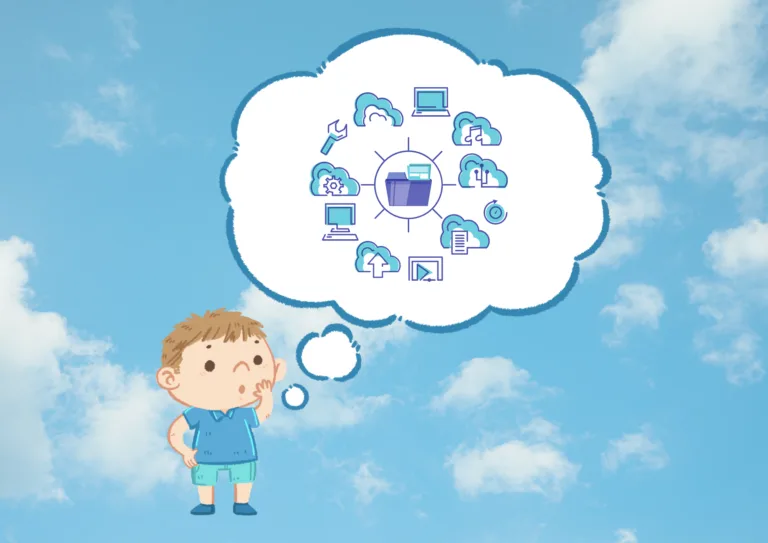“Cloud computing keeps changing, and the next big step is going multi-cloud.”
🌤️ What Does "Multi-Cloud" Mean?
Let’s keep it simple.
Multi-cloud means using more than one cloud company—like using Amazon Web Services (AWS), Microsoft Azure, and Google Cloud at the same time.
It’s different from hybrid cloud (which mixes public and private clouds). Multi-cloud sticks with public clouds, but spreads the work around.

🌍Why Everyone's Talking About Multi-Cloud ?
1. 🚫 Avoid Vendor Lock-In
If you only use one cloud, you’re tied to their rules, prices, and updates.
Using more than one gives you more control and choices.
🧠 Think about it:
What happens if your cloud provider has a major outage?
2. 🧰 Get the Best of Each Cloud
Each provider is strong in different areas:
AWS: Huge service range and global reach
Azure: Seamless with Microsoft tools
Google Cloud: Excellent for AI, ML, and data analytics
With multi-cloud, you can pick the best tool for the job—and maybe even save money.
3. 🔁 Stay Online, Even if One Cloud Goes Down
Multi-cloud = built-in redundancy.
If one provider fails, the others can take over.
💬 What about you?
Does your business have a backup plan if your main cloud goes offline?
⚠️ What Can Be Tricky?
🔧 It’s More Complex
More clouds = more systems to manage.
Fix: Use tools like Terraform, Kubernetes, or cloud management platforms.
🔧 🔒 Security Gets Tougher
You need a consistent security policy across clouds.
Fix: Use unified identity, access controls and encryption.
👩💻 Your Team Needs to Learn More
Each cloud has its quirks.
Fix: Invest in training and start small.

🔮 What’s Coming Next?
Cloud Agnostic: The Future of Freedom
The future is cloud agnostic—this means being able to run your applications and workloads across any cloud provider, without being tied to just one.
Being cloud agnostic is the ideal situation for businesses that want maximum flexibility. Instead of being locked into a single provider’s tools, pricing model, or ecosystem, you can:
Choose the best cloud for each need: Whether it’s AWS for scale, Azure for integration with Microsoft tools, or Google Cloud for AI.
Move workloads freely: You can easily switch clouds if a provider changes its pricing, features, or reliability.
Avoid being affected by vendor-specific issues: If one cloud experiences an outage or an issue, you can seamlessly switch to another, minimizing downtime.
Why does this matter?
The more cloud agnostic your setup, the more control and agility your business has. This is especially important in industries where uptime and flexibility are critical.
Thanks to advancements in:
Containers (like Docker), which allow applications to run consistently across different cloud environments
Serverless computing (like AWS Lambda), which lets you focus on code without worrying about infrastructure
Cross-cloud management tools that help you monitor and manage resources across multiple clouds
…it’s easier than ever to adopt a cloud agnostic strategy and avoid getting stuck with just one provider.

🛠️ Want to Get Started?
Here’s your simple game plan:
✅ Review what you’re already using
🔍 Spot areas that could benefit from a second cloud
🧰 Pick tools that work across platforms
👩🏫 Train your team and run a small pilot
📣 Your Turn!
In the comments, share:
Which cloud you use now
Which one you’re thinking of trying
The biggest challenge you’re facing
Let’s help each other figure it out! 💬👇


🔁 Quick Recap
Multi-cloud = using more than one provider
Why it matters: more choice, less risk, better flexibility
Cloud agnostic = freedom to run your apps anywhere, without being locked into a single provider
Be ready: it’s a bit more complex but totally doable
The future: cloud tools that run anywhere
Devops Multi cloud Training
Choose the training style that fits your schedule — Self-Paced or Live Interactive Sessions. Both include hands-on projects, expert support, and lifetime access.
| Feature | Self-Paced Training | Live Training |
|---|---|---|
| 🎯 Mode | 🎥Pre-Recorded Session | 🧑🏫Live Class + Recordings |
| 💼 Projects | 🕒 Weekend Real-Time Projects | 📅 Weekdays + Weekend Real-Time Projects |
| ❓ Doubt Clearing | 📞 Weekend Live Support Session | 🧠 Anytime Doubt Clearing Session |
| 👥 Career Support & Mentorship | ❌ No | ✅ Yes |
| 🎓 Global Certification Training | ❌ No | ✅ Yes |
| 🔑 Access | ♾️ Lifetime Access | ♾️ Lifetime Access |
| 💰 Fees | ₹4,999 (2 x ₹2,500) | ₹7,999 (2 x ₹4,000) |
| ℹ️ For More Info | Explore Self-Paced Training | Explore Live Training |


The way of teaching is very clear and enthusiastic. I really i like it.
Thank you!!